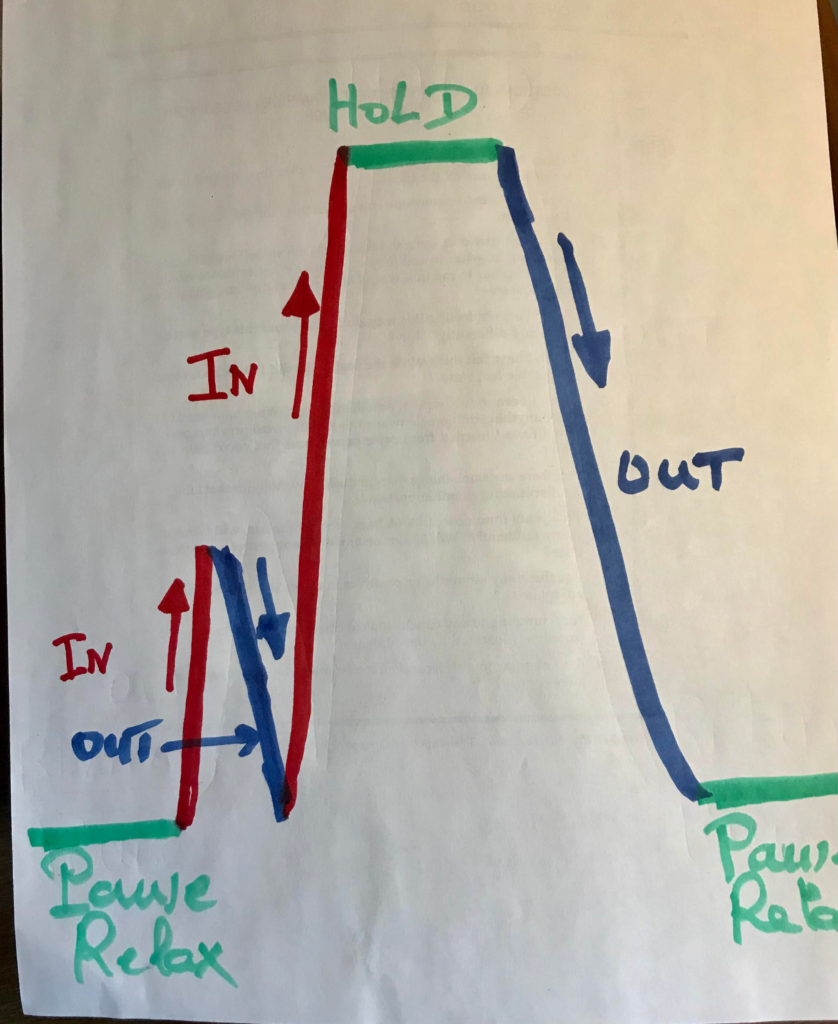

Breathing Practice with a diagram
Breathing is an essential yet often overlooked function that is key to our mental and emotional well-being. When stressed or anxious, we tend to breathe shallowly and rapidly, reflecting our emotional state and exacerbating it. This poor breathing pattern triggers the body's stress response, leading to the release of cortisol, increased heart rate, and muscle tension. Over time, these effects can contribute to health issues, such as hypertension, cardiovascular diseases, and mental health disorders like anxiety and depression.
On the other hand, conscious, slow, and deep breathing activates the parasympathetic nervous system, which promotes relaxation. Techniques like diaphragmatic breathing, deep breathing exercises, and mindful breathing can reduce heart rate, lower blood pressure, and induce feelings of calm. These practices are integral to yoga, meditation, and mindfulness as tools for stress management and emotional regulation.
Breathing can also help manage emotions. When we slow our breath, it signals to the body that it is safe to relax, making it easier to cope with emotions like anxiety, anger, or sadness. One example of using breathing for stress relief is the technique practiced by US Navy SEALs. This method, based on the Valsalva maneuver, helps control the heart rate and lower blood pressure. Navy SEALs use this technique at least twice daily for about 10 minutes.
It’s worth noting that the most effective relaxation response occurs during the out-breath. Research has shown that the act of slowly exhaling, especially when it’s longer than the inhale, promotes a state of calm. This is because the outbreath stimulates the parasympathetic vagus nerve, which plays a crucial role in slowing the heart rate and lowering blood pressure. The natural rhythm of the breath can shift from a state of tension to a state of relaxation, helping us manage acute stress and emotional discomfort.
The technique involves a sequence of breathing steps:
1. Sit with a straight back, take a normal inhale (IN red) and exhale (OUT blue)
2. Take a slow maximal inhale without forcing (IN red)
3. Hold your breath as long as possible (HOLD green) – The longer the better!
4. Exhale slowly (OUT blue) - A slow exhalation helps activate the parasympathetic nervous system, helping the body and mind to relax.
5. Pause for a few seconds (3-4) before repeating the cycle.
Repeat this cycle (steps 1-5) about 5 to 10 times depending on your practice/need. You will notice that your holding period will increase with practice.
This practice can be especially helpful during meditation or whenever experiencing stress, anxiety, or other negative emotions. Regular practice will help you become more familiar with the technique and significantly enhance its effectiveness. Thanks!
